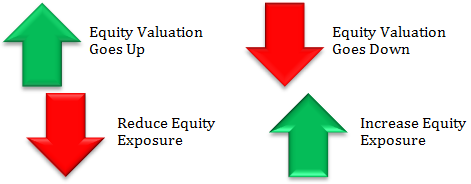
Table of Contents
Fed Balance Sheet
What is Fed Balance Sheet?
Similar to other general balance sheets, the Fed Balance Sheet comprises of two columns- assets and liabilities. The Fed gives out its weekly report H.4.1 on Thursday. The Fed balance sheet's assets comprise principally of government securities, Bonds, and the loans it offers to its banks in different regions. Its liabilities incorporate the currency, which is currently in circulation in the United States. Apart from this, they also comprise of the money invested in the reserve accounts of the regional banks and other Depository centres in the United States.

For a lot of time in history, the Fed balance sheet definition was quite a dormant point. The weekly balance sheet (also known as the H.4.1 report), which was given out every Thursday, incorporated certain things that might appear similar to the regular balance sheets of business organizations. It records all assets and liabilities, giving out a summarised explanation of every one of the 12 Federal Reserve Banks in all the regions.
Role of the Fed Balance Sheet in the 2007-2008 Financial Crisis
The balance sheet, which was given out every week, got well known amongst the media during the monetary crisis beginning in 2007. When they decided to launch their quantitative facilitating in light of the continuous financial crisis, the Fed balance sheet gave examiners a necessary average of the Fed Market functions' degree and size at that particular point.
Explicitly, the Fed balance sheet report permitted experts to see factors around the usage of an expansionary financial approach utilized during the 2007-2009 financial crisis. The budgetary emergency of 2007-08 did not just make the Fed balance sheet more complicated, along with that, it stirred the enthusiasm of the general population in it. Before delving into the complexities, it would be a smart move to investigate the Fed balance sheet's assets and, after that, its liabilities.
Talk to our investment specialist
Primary Objective of the Fed Balance Sheet
The aim of the Fed balance sheet is fundamental. Anything that the Fed needs to pay turns into the Fed's benefit (asset). The Fed's assets have primarily comprised of government securities and credits offered to regional banks through the repo rate and rebate window.
This report by the Fed gives a solidified summary of all the Federal Reserve banks' states regarding their assets and liabilities. The Fed watchers have depended on developments in assets or liabilities of the Fed to anticipate changes in monetary cycles for decades now.
Conclusion
When the Fed purchases government securities or offers loans through its rebate window, it basically pays by crediting the reserve account of the banks through accounts or book entries. If the banks wish to transfer their reserve account balance in the form of cash by chance, the Fed gives them US dollars. In this way, the Fed's assets incorporate securities it has bought through the Open Market operations (OMO), along with any credit offered to the banks, which will be reimbursed sometime in the future.
All efforts have been made to ensure the information provided here is accurate. However, no guarantees are made regarding correctness of data. Please verify with scheme information document before making any investment.












